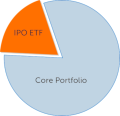By almost any measure, 2013 has been a record-breaking year for biotech IPOs. The 33 biotech IPOs completed and the $2.5 billion raised are more than the totals from the previous five years combined and far exceed the levels reached at the height of the tech bubble in 2000, when 26 companies raised $1.9 billion. So far this year, six biotechs have gained more than 50% on their first day of trading, and one of every three deals has had a 20% or greater first-day pop. In June, we declared that biotech IPOs were back and noted the positive influences of promising results from clinical trials, accelerated FDA approvals and increased appetite for risk. We also surmised that an influx of generalist investors was contributing to IPO performance.
But as the year comes to a close, enthusiasm for the sector has vanished. Six of eight scheduled biotech IPOs have been postponed in November, and the average total return for the year’s deals, which was 55% on October 1, has plummeted to 14%. Interest in riskier, early-stage biotech deals has particularly fallen off. More than half of the year’s biotech IPOs were companies whose lead drug candidates had yet to complete Phase 2 trials (often the first involving the targeted patients). The early-stage companies that had many of the best first-day returns earlier in the year are now among the worst performers.
| 2013 biotech IPO returns by stage of development | |||
| Phase of lead drug candidate | Count | First-day return | Total return as of 11/22 |
| Preclinical | 1* | 74% | -1% |
| Phase 1 | 5 | 34% | -3% |
| Phase 2 | 11 | 14% | 10% |
| Phase 3 | 14 | 12% | 21% |
| Phase 3 completed | 2** | 1% | 44% |
**Omthera (OMTH) and Relypsa (RLYP). Omthera was acquired by AstraZeneca less than 60 days after its IPO.
As returns climbed this year, valuations crept up as well. From 2010 to 2012, only six of 28 biotech companies came public with market caps above $300 million; in 2013, nearly half have exceeded this level. These relatively expensive companies generally had much higher first-day pops, but their total returns are now worse on average than those of companies with less aggressive IPO valuations.
| 2013 biotech IPO returns by market cap at pricing | |||
| Market cap at IPO ($ in mil) | Count | First-day return | Total return |
| $0-$99 | 6 | 1% | 28% |
| $100-$199 | 6 | -3% | 13% |
| $200-$299 | 6 | 4% | 8% |
| $300-$399 | 5 | 29% | 12% |
| $400-$499 | 7 | 37% | 8% |
| $500+ | 3 | 49% | 14% |
Over the last several years, it was normal to see a fair share of biotechs adjust valuations downward in an effort to tap the public markets. The strong pricings of 2013 biotechs earlier in the year may have reflected new promise in the sector after several discouraging years, and it may have been driven in part by momentum and a growing contribution from non-traditional biotech investors. As we close out 2013, it will be interesting to see if the 2013 biotech breakout was a merely an anomaly or if the recent about-face in sentiment indicates a change back to the norm that existed for much of the past decade.


